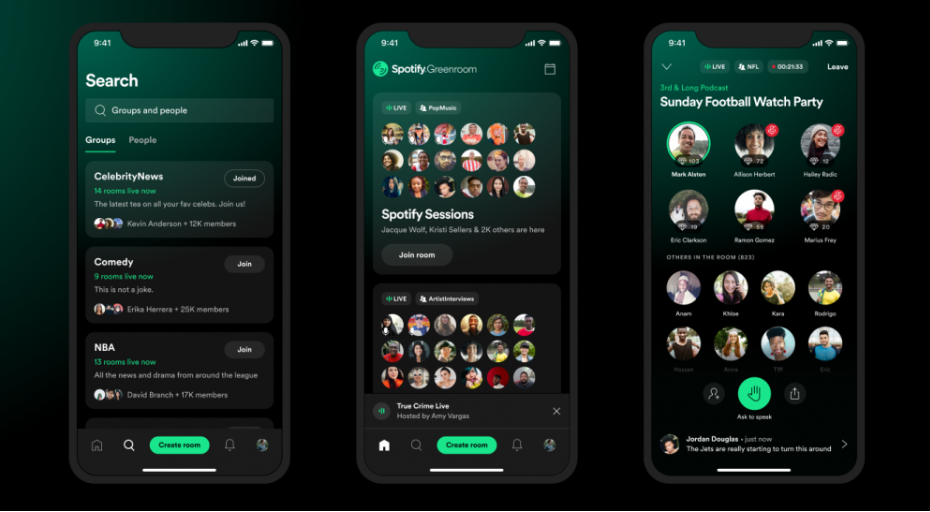If you’re looking for the best music streaming app services, look no further. Spotify is not your only choice.
Choosing the best music streaming service used to be straightforward. There weren’t many options until a few years ago, and Spotify was the popular, fun, and easy-to-use option. That’s what most people signed up for, which helps to explain why it had a whopping 365 million users the last time statistics were released in 2021.
In 2022, you don’t have to sign up for Spotify if you don’t want to. This is good news in light of the controversy and misinformation surrounding The Joe Rogan Experience podcast, as well as the lack of a promised ‘Spotify HiFi tier.
Spotify is no longer at the top of our list these days. Because, despite having promised high-resolution audio for some time, it has yet to appear. Tidal, Apple Music, and Amazon Music HD, on the other hand, provide significantly better audio quality.
Sure, there aren’t many options anymore, but a lot of other music streaming services now provide everything you need, including a massive track library, a great experience across all of your devices, playlist creation tools, and personalized recommendations.
This guide will show you the best music streaming services available today, including what we like and dislike about using them, our extensive testing of them all, and the audio quality they provide. This should assist you in determining which music streaming service is worth the monthly subscription fee.
How to Pick the Best Music Streaming App Service?
You can’t go wrong with any of the options on this list if you don’t have any specific requirements for a new music streaming service and simply want to be able to play music on all of your devices, create playlists, and see recommendations.
They all, for the most part, provide the same type of service, with a large selection of music and cool discovery features. However, if you’re looking for something specific in terms of experience, audio performance, or interface, you have more leeway.
For example, while all of the music streaming services listed below have a similar user interface, they are not the same. If the service you’re considering offers a free trial period, it’s well worth signing up to see if you like how it works and looks. Most people will get the hang of any new app after a week or two, but we found Spotify and Tidal to be the slickest and most user-friendly.
Furthermore, make sure your favourite artists are available on the music streaming platform you’re thinking about joining. Most artists are now available on all platforms, but there are still a few who appear on only a few. For example, due to the ongoing controversy surrounding The Joe Rogan Experience, both Neil Young and Joni Mitchell removed their music from Spotify in early 2022.
Another consideration is audio quality. Many of the best music streaming services on this list have improved the quality of their tracks in the last year, with Apple Music and Amazon Music HD both introducing hi-res audio to their platforms. Even Spotify has announced a high-quality offering called Spotify HiFi, but despite promising to deliver it by the end of 2021, it is still not available.
Even so, there are differences in how much you pay for CD-quality audio and how many audiophile-approved tracks you can listen to. You’ll also want to make sure you have the best headphones or stereo speakers to take advantage of the improved sound — oh, and if you’re already immersed in Apple’s ecosystem, say, with an iPhone, AirPods, and HomePod mini, Apple Music (with its Lossless and head-tracked Spatial Audio output – all of which can be accessed by Siri) should be your first port of call.
With that in mind, browse our list of the best music streaming services below.
Best Cheapest Affordable Most Popular High-Quality Music Streaming App Online Sites Free and Paid Compared:
Best Music Streaming App Service in 2022 For Multiple Devices.
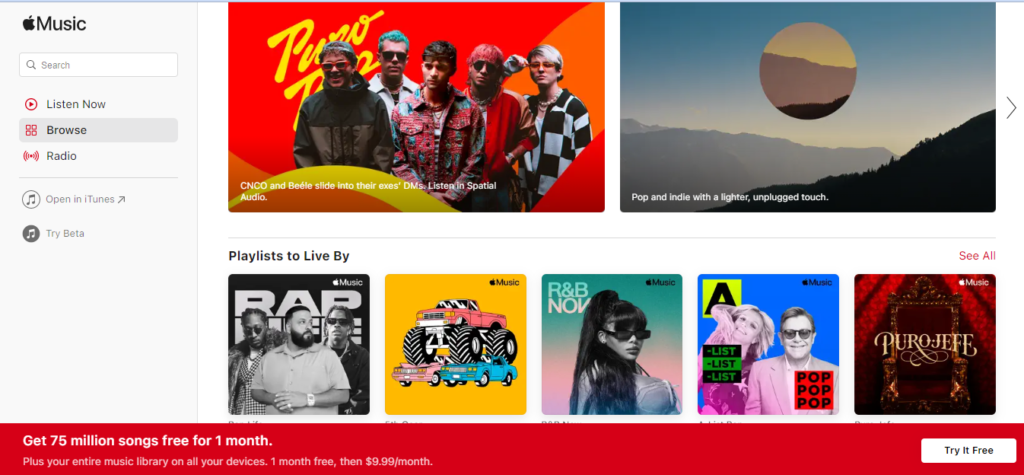
1. Apple Music
The design and intelligence of Apple make this a true Spotify competitor.
Pros
- Massive music library
- Can integrate personal music
- Lossless and Spatial Audio
- Good music discovery
Cons
- Spotify wins recommendations
- Podcasts in a separate app
- The mobile app is a bit clunky
Apple Music is an Apple streaming service. It has a massive library with over 90 million songs, as well as music videos and exclusives – to be honest, it isn’t much you won’t find here. Apple Music is designed to help you discover new music and artists, whether through recommendations, curated playlists, or its 24-hour digital radio stations.
You can also transfer all of your music from iTunes to the service, putting everything in one place. While you don’t need a house full of Apple products to use Apple Music, all of your Apple devices, as well as Apple’s smart assistant, Siri, work seamlessly with the company’s streaming service. Also, Apple isn’t shy about telling you about the additional benefits of using its top-tier AirPods Max or AirPods Pro – namely, personalized, head-tracked Spatial Audio.
Apps are sleek and simple to use. Although some of the icons on the mobile app feel a little too big for the screen – you’ll get a better experience on a desktop or tablet – this isn’t a dealbreaker; we’re just being picky.
Until recently, we would have said there was little to distinguish Apple Music from Spotify. However, as of June 2021, Apple Music’s offering includes Lossless and Spatial Audio, as well as Dolby Atmos support. This allows users to listen to more than 90 million tracks in Lossless Audio for free.
Apple Music costs $9.99/£9.99 per month for individuals and $14.99/£14.99 per month for families of up to six users. A student plan with a free Apple TV+ subscription is also available for $4.99/£4.99 per month.
(Apple Music now offers a half-priced plan called the Apple Music Voice Plan.)
It’s half the price of the standard Apple Music plan and is intended for people who like to use Siri to control their Apple devices (although how many people that really is remains to be seen).
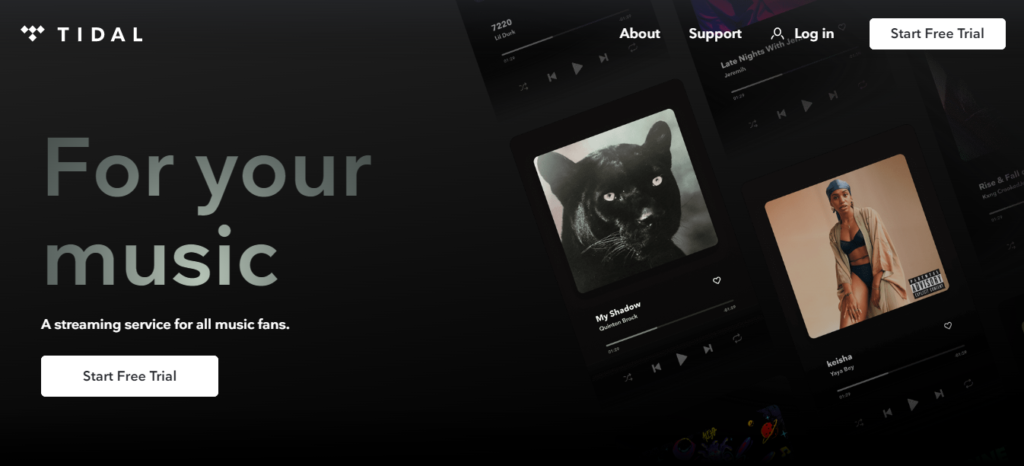
2. Tidal
Audiophiles will appreciate the exceptional sound quality.
Pros
- Exceptional sound
- Music videos
- Great interface
Cons
- HiFi is expensive
- Playlists are not quite as polished as Spotify
- No podcasts
Tidal, our favourite streaming service, debuted in 2014, but most of us only learned about it a year later, when Jay-Z relaunched it at a star-studded event in March 2015. The recording artist reportedly sold a large portion of the streaming service to Jack Dorsey’s Square in March 2021, but it appears to be very similar to Spotify. However, there are two key features that set it apart.
The first is that it is advertised as artist-owned. This means it gets a better deal (though not necessarily a great deal) for musicians, paying them more per stream than many other services.
The second benefit is that listeners get a better deal as well, thanks to excellent CD-quality sound, especially if you’re willing to pay extra for Tidal’s top-tier premium subscription, HiFi Plus. That means that if you take your listening more seriously, you and its MQA (Master Quality Authenticated) files could be a perfect match.
Although Tidal is superior across the board, the $19.99/£19.99 Tidal HiFi Plus streaming makes the most sense and represents the most significant improvement in quality.
Some will pay a high price for this, while others will see it as a no-brainer. Especially if you’ve already invested in audio equipment, such as the best noise-cancelling headphones. Tidal is one of the streaming services that offer lossless and high-resolution audio files that will complement your love of music and high-end audio setup.
If you’re interested, start with the 30-day free trial (or, if you live in the US, try Tidal’s free tier, Tidal Free). Because the file quality is capped, you might not notice a difference between Tidal and your preferred music streaming service here, but opt for a paid subscription and you might soon realize what you’ve been missing out on.
Tidal also offers students 50% off its HiFi and HiFi Plus plans, as well as the same 30-day free trial.
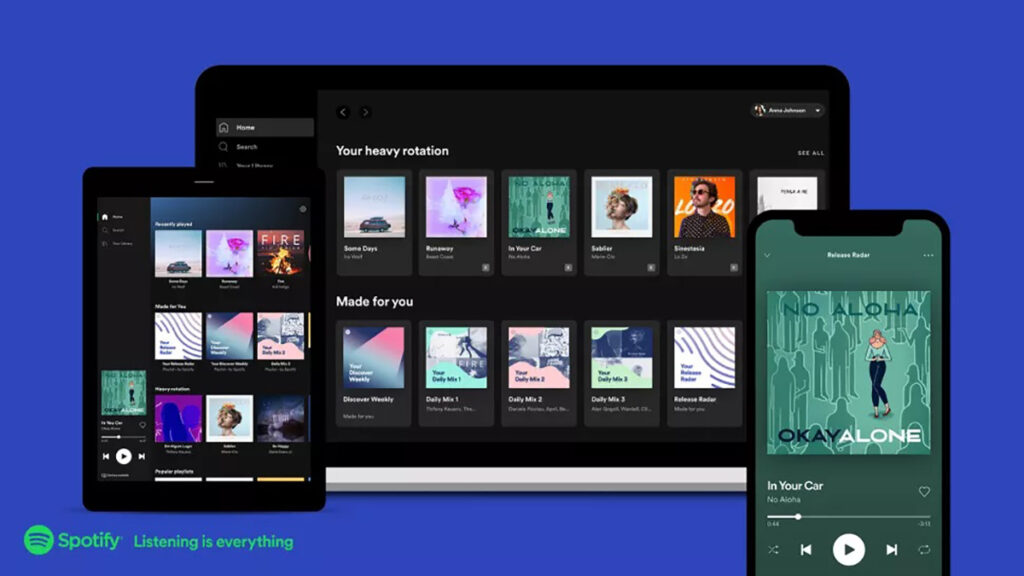
3. Spotify
The most popular streaming service in the world
Pros
- Fantastic personalized playlists
- Huge library of music and podcasts
- Easy-to-use interface
Cons
- No high-res audio
- Web player feels basic
- Not the best for compensate artists
Spotify was founded in 2008 and now has a library of over 82 million tracks and 2.2 million podcasts. There’s also a free tier. It’s no surprise, then, that it has 365 million users worldwide and is still growing.
Spotify, on the other hand, is more than just a large collection of songs and podcasts. It has an easy-to-use interface, a fantastic recommendation engine that powers its customized playlists, new features added on a regular basis, and social tools that make sharing simple, and you can use it almost anywhere on almost any device.
Although Spotify’s core features – a great catalogue, an intuitive user interface, and an affordable price plan – make it a fantastic service, the platform stands out for its constant innovation through new features, redesigns, customized playlists, and even new offerings such as Spotify Lite. These enhancements are made on a regular basis to ensure that it truly provides the best experience for everyone. Spotify, for example, added a simple way to block other users in November 2021 – a great idea for stopping online harassment or allowing people to cut ties with old friends and exes they’d rather not have looking at their playlists or activity.
The main disadvantage is that it lacks the high-quality audio experience provided by some of its competitors, most notably Tidal and Amazon Music HD. Spotify promised that it’s lossless, CD-quality offering, Spotify HiFi, would be available by the end of 2021, but it has yet to appear.
Furthermore, at the start of 2022, the service was at the centre of a controversy because it hosts The Joe Rogan Experience, a podcast in which the host claims that healthy young people do not require the Covid vaccine.
As a result, several artists, including Neil Young and Joni Mitchell, have removed their music from the service, with more expected to do so. Spotify responded by stating that it would add content advisory warnings to any podcasts on the platform that discuss the pandemic, but the service has since lost more than $2 billion.
Spotify Premium costs $9.99 / £9.99 for individuals and $15.99 / £15.99 for a Premium family plan with up to six members. There’s also a $4.99 / £4.99 Student Premium plan that includes Showtime and Hulu’s ad-supported tier for free.
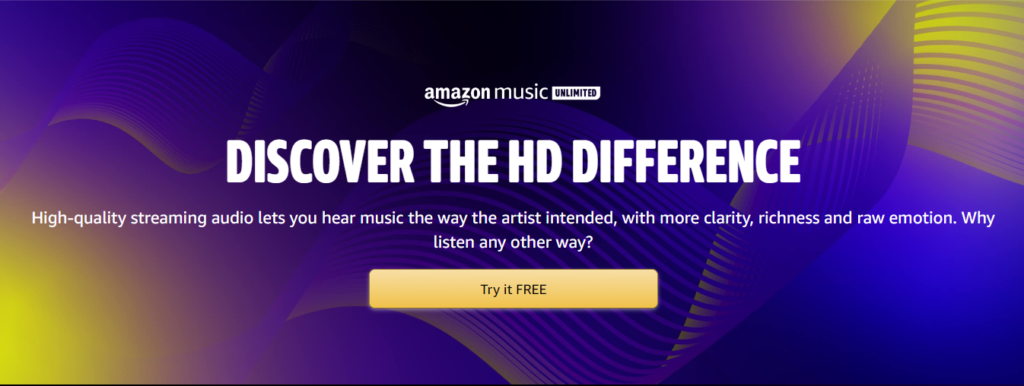
4. Amazon Music HD
Excellent value-for-money music streaming with high-quality audio.
REASONS TO BUY
- Huge selection of music
- Great for people with Prime
- Hi-res audio
- Simple and easy-to-use
REASONS TO AVOID
- Not as good-looking as the competition-
- Music discovery is good, but not great
- No video content
- No free ad tier
Amazon has launched a number of streaming services over the years. Amazon Music HD, which competes with Spotify and Apple Music, is the best.
This is a high-quality music service that competes with audiophile-grade services like Tidal at an affordable price. It provides users with lossless FLAC audio at 24-bit/192kHz, whereas Spotify only provides 320kbps.
Amazon Music Unlimited subscribers can now get free access to high-quality streaming audio, which was previously reserved for Amazon Music HD subscribers. This puts it on par with Apple Music in terms of providing a free audio quality upgrade; other services, such as Tidal and, soon (if it ever makes good on its promise), Spotify, charge a fee.
If you already have Amazon Prime, you can get this streaming service for $7.99 / £7.99 / AU$6.99 per month instead of $9.99 / £9.99 / AU$11.99 per month. There’s also a $14.99/£14.99/AU$17.99 monthly family plan and a $4.99/£4.99 monthly student plan.
And, as expected, Amazon Music HD’s controls are well integrated with Alexa. That is, if you are already a regular user of Amazon and its products, this could be the best music streaming service for you. Even if you don’t, this is a good value option with high-resolution audio and a solid music library.
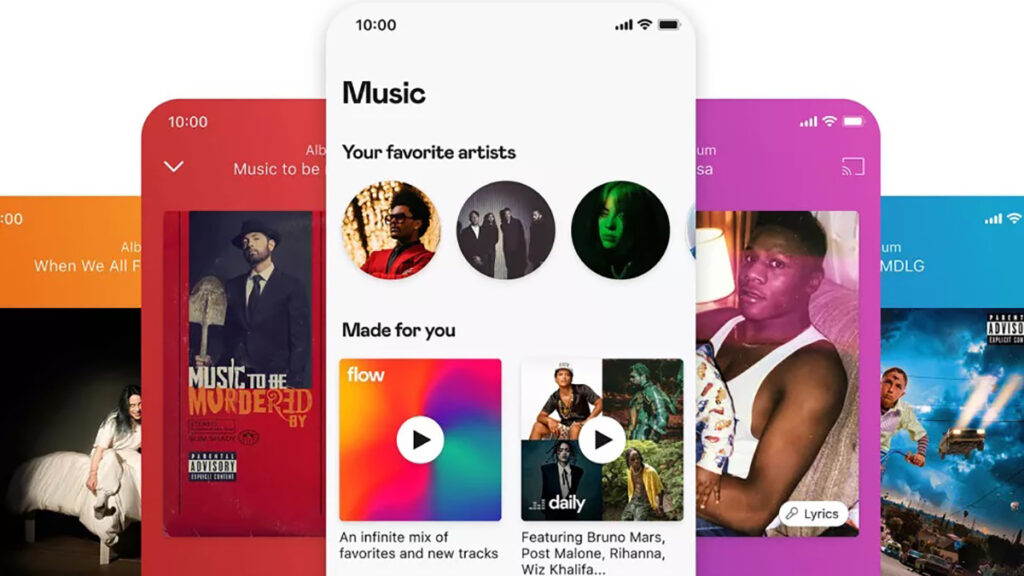
5. Deezer
If you’re looking for higher-quality streams, this is a good buy.
Pros
- CD-quality streams
- Good value for money
- Support for Sony 360 Reality Audio
Cons
- Sparse interface
- No hi-res audio
- Social aspects could be improved
Deezer has over 90 million songs in its catalogue, and its affordable subscription plans ensure that there is a streaming tier for everyone. They all include a free three-month trial period, allowing you to fully explore the platform before committing.
With a rather sterile aesthetic, the user interface does not feel as intuitive as Spotify or Apple Music. Having said that, Deezer is simple to use and navigate, whether you use the desktop browser, desktop app, or mobile phone app.
Deezer’s music curation, like that of other streaming services, consists of a mix of curated and personalized playlists. Furthermore, your listening habits will influence algorithmically generated playlists tailored to your preferences. The latter, while not as well-curated as Spotify and Tidal, is quite good, and the platform’s innovative Flow technology allows you to listen to an infinite stream of personalized tracks with just one tap/click.
The audio quality available depends on the subscription tier you choose: Deezer’s Free subscription plan provides MP3 files at 128kbps, while its Premium tier offers 320kbps, which matches Spotify’s Premium tier.
What we’re most interested in is the Deezer ‘HiFi’ tier. It costs $14.99 / £14.99 / AU$14.99 per month and lets you stream songs in CD quality, with 16-bit / 44.1kHz FLAC files at 1,411kbps, the same as Tidal’s mid-tier HiFi tier. However, Deezer does not provide access to true hi-res audio files, because hi-res audio (remind yourself of this for homework) refers to music files with a higher sampling frequency and/or bit depth than CD, which is specified at 16-bit/44.1kHz.
Deezer’s HiFi tier, on the other hand, includes access to Sony’s 360 Reality Audio format via a dedicated app. These tracks have received the spatial audio treatment, making it appear as if each instrument is approaching you from a different angle within a virtual sphere of sound. Tidal also provides this service, but it is more expensive.
Read More For Audio Visuals
